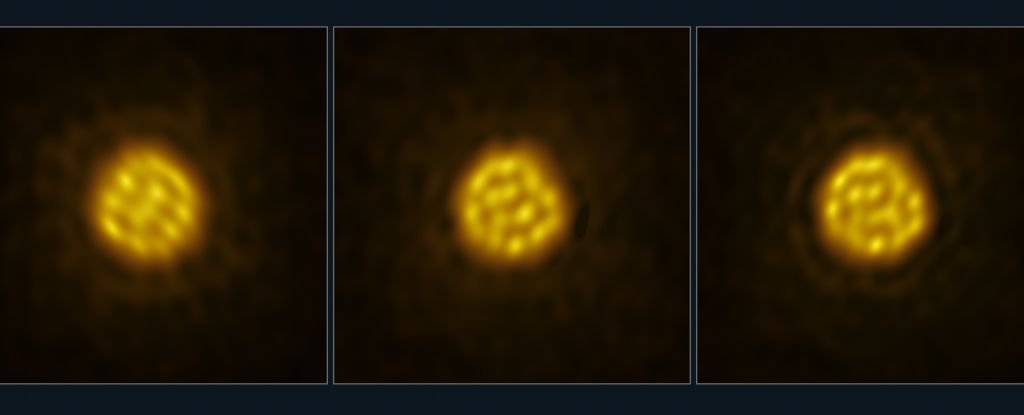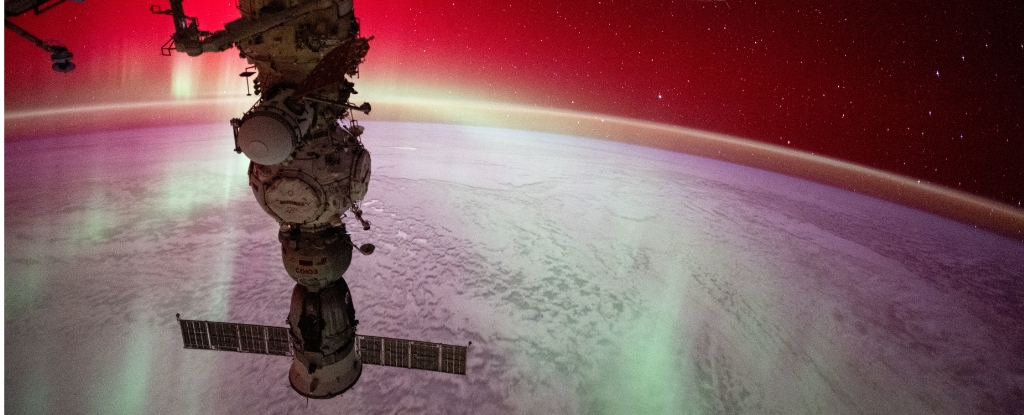Astronomers used the ALMA telescope to image the surface of the red giant star R Doradus, located about 180 light years from Earth.
They were able to see convection patterns on the star’s surface, something never observed before on another star besides our Sun.
The convection patterns took the form of enormous bubbles rising up from the interior, around 75 times the size of our Sun.

On the Sun, convection granules are typically only around 1,000 km across, but these bubbles on R Doradus reach tens of thousands of km.
Over a period of about 2 weeks, the astronomers captured 3 snapshots showing the shifting patterns on the star’s surface as heat bubbles up and falls back down.
The cycling time of the convection was observed to be around a month, much faster than solar convection cell patterns which persist for hours or days.

Red giant stars are in a different stage of life compared to our middle-aged Sun, so their interior processes like convection may work differently than on the Sun.
This is a first glimpse of convection directly imaged on another star, giving insights into stellar processes beyond what we can observe of the Sun.
Source: ScienceAlert









